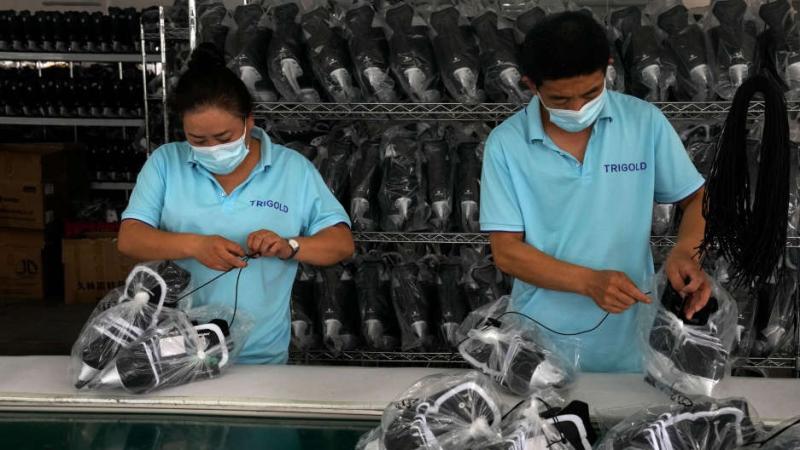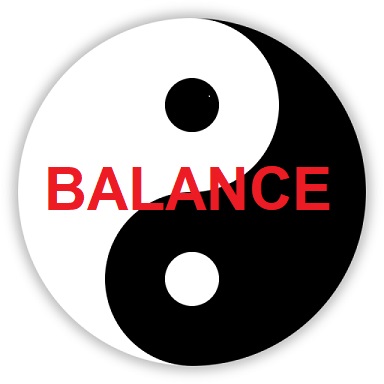Chinese suppliers face ambiguous global supply chain amid pandemic
By: By Rebecca Kanthor - The World (via MSN)



Chinese suppliers face ambiguous global supply chain amid pandemic
At a factory in Ningbo, China, forklifts unload raw materials from a shipping container. The factory makes all kinds of plastic items — storage containers, toys, Christmas lights and decorations — and sends them in other shipping containers to dollar stores across the United States.

© Andy Wong/AP/File photo - Workers packing ice-skating shoes at a manufacturing factory in the ice and snow sports equipment industry park in Zhangjiakou in northwestern China's Hebei province, July 15, 2021.
Last year, the factory owner, Duan Li, presented the process to The World: huge bags of plastic pellets that he imports from Malaysia, molding machines pumping out products 24 hours a day, seven days a week, and workers packing boxes on the factory floor.
“I’ve got at least 200 shipping containers worth of plastic storage boxes just sitting in a warehouse, but I can’t get the shipping containers to put them in. The prices used to be low, but now a shipping container costs me $20,000. And the wait for a container is two or three months.”
Duan Li, factory owner, China
“I’ve got at least 200 shipping containers worth of plastic storage boxes just sitting in a warehouse,” he said, “but I can’t get the shipping containers to put them in. The prices used to be low, but now a shipping container costs me $20,000. And the wait for a container is two or three months.”
Every year around this time, factories in China are finishing up orders and sending them across the world to arrive in time for the holiday shopping season. But this year, Duan said, there might not be enough time.
“Every day, I bid on a shipping container. I’ll just have to pay more for the containers so I can get them on the ships,” Duan said. “It’s only going to get more expensive as we get closer to Christmas. And the American shoppers are going to have to pay higher prices.”
Duan is not the only one facing shipping problems in China — especially when a single COVID-19 case can shut down a terminal for weeks.
China’s zero-tolerance policy is one reason that the country has managed to keep its COVID-19 numbers relatively low compared to many other countries. Travel into the country is restricted and authorities isolate COVID-19 cases through contact-tracing and quarantines. The policy also includes shutting down shipping and airport terminals for weeks at a time.
In August, China shut down Meishan Island International Container Terminal at Ningbo-Zhoushan port — the third-largest and busiest port in the world — because of a single COVID-19 case. Then they shut down a terminal in Shanghai’s Pudong airport because of five COVID-19 cases.
“That kind of ambiguity enters the supply chain, you know, it just reverberates back through the network, like a bullwhip. ... What that does is [it] just creates a lot of uncertainty and, at the end of day, higher cost.”
Jarrod Ward, chief business development officer, Yusen Logistics, East Asia office, China
Jarrod Ward, chief business development officer at Yusen Logistics’ East Asia office, helps clients develop a plan for when things go wrong.
“That kind of ambiguity enters the supply chain, you know, it just reverberates back through the network, like a bullwhip,” he said. “What that does is [it] just creates a lot of uncertainty and, at the end of day, higher cost.”
The irony, said Ward and others, is that business is booming; it’s just getting harder and harder to get stuff to the people who order them. Ward said companies need to have back-up plans and be ready to move fast.
“First thing is, make sure that you're aware of what those options are, and then be prepared to make very fast decisions based on fluid, ambiguous information,” he says. “And that takes a lot of guts.”
Terminal closures have become one of the biggest headaches.
Sal Mercagliano, a history professor and a former merchant mariner, has a whole YouTube channel devoted to global supply chain issues. Every day, he checks a marine traffic app to see what’s happening at different ports around the world. He said when the Ningbo port was partially shut down last month, some shipping companies diverted ships to other ports.
“Instead of getting it next month, it may be getting it in January, which, if you’re loaded with Christmas goods, you’re in trouble.”
Sal Mercagliano, history professor and former merchant mariner
“Which means if you were expecting your load of containers coming out of Ningbo, it might not be there,” he said. “Instead of getting it next month, it may be getting it in January, which, if you’re loaded with Christmas goods, you’re in trouble.”
“Thanksgiving, Halloween and Christmas — there will be empty shelves. They just can’t get there in time.”
Michael Crotty, home textiles trader, Shanghai, China
Michael Crotty runs a home textiles trading company in Shanghai. “They’re still trying to work through that bottleneck,” he said. “Thanksgiving, Halloween and Christmas — there will be empty shelves. They just can’t get there in time.”
Crotty said he’s short 25 to 30 containers because of the backup. But he says no matter what pressure other countries put on Beijing, the government is not likely to back down on its strict COVID-19 policies.
“China’s zero-[tolerance] policy is not going away, no matter whether the world likes it or not,” he said. “They managed to control the pandemic since the early stages. And no matter what kind of pressure is applied from the West, their decision will be whatever they think is best for their population.”
Even if terminal closures are gumming up supply chains and hurting business owners, many people in China think it’s the right thing to do.
That includes Kurt Huang, who runs a fruit import business.
“The past year has shown that the government is taking the right approach and they’ll continue this policy. It’s what has made it possible for us to lead normal lives and for our economy to continue."
Kurt Huang, fruit importer, China
“The past year has shown that the government is taking the right approach,” he said, “and they’ll continue this policy. It’s what has made it possible for us to lead normal lives and for our economy to continue,” he said.
So, with no foreseeable end in sight, professor Sal Martigliano said American shoppers should be prepared.
“Do your Christmas shopping now,” he said. “Me and my wife have been doing it for our son. We're trying to grab stuff now. I think you're going to need to really be that flexible in what you want to get.”
Let the holiday shopping season begin!
.
BUZZ NOTE: Comments are subject to the Confucius group RED RULES which may be accessed by clicking on the Confucius group avatar at the top right of this page.
Political comments are banned and will be deleted.
 Article is LOCKED by moderator [Buzz of the Orient]
Article is LOCKED by moderator [Buzz of the Orient]



China's zero-tolerance policy is not the only reason for the shortage of shipping containers. Ships are lined up to unload at ports in other countries as well.
The problem arises with not a lack of containers but them being in the wrong spot. The US is overwhelmed with empties and a lack of chassis, china has a shortage of containers. To add to this there are not enough rail cars to move the containers the inland depots are swamped and there is a lack of drivers to move the containers.
Most of this all stems back to 2020 with many ships returned to the FE without repositioning empties. US exports sat at the customers/exporter from a lack of chassis and drivers.